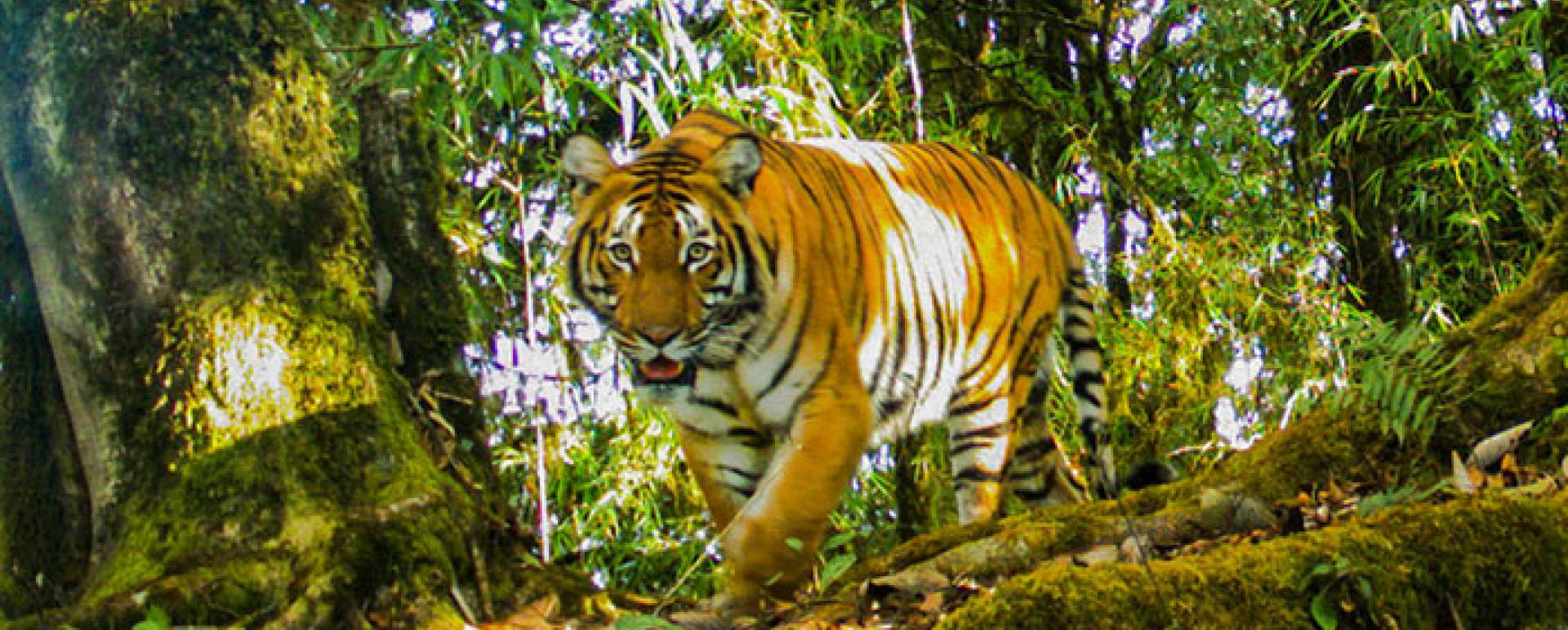Tiger conservation has reached a global crisis level today.
From a flourishing 100,000 tigers that roamed the face of the planet a century ago, the numbers has dropped to just about 4,000 today.
Large habitat fragmentation, pollution of river systems, threats from poachers and loss of prey, among others, poses the biggest survival threat to the animal.
At the current rate of decline, experts warn that in a few decades the endangered species could go extinct.
However, all is not lost.
Bhutan’s commitment to conserving the big cat remains firm.
A decade ago, the country had committed to double its tiger population by 2022 during a declaration on tiger conservation signed in Russia.
Bhutan managed to achieve the target with the number of tigers increasing from 10 to 22 between 2010 and 2016.
The country is home to about three percent (more than100 tigers) of the total global tiger population today.
Head of Global Tiger Centre in Gelephu, Tshering Tempa (PhD), during the third Bhutan Lectures in Innovation Science and Society (BLISS) talk last week in Thimphu said that Bhutan was proposing for a sanctuary, a promised land for the tigers in the south Asian region.
He said that the growing human population and other developmental activities threaten the long-term “persistence and viability of tigers” in the region.
One landscape, however, had the potential for tiger conservation and was still naturally intact and devoid of developmental pressure, he added.
The landscape stretches from the Eastern Himalayas, skirting the southern boundary of China stretching southwards to the Basin of Irrawaddy River.
He said, “If Bhutan is any indication of what the rest of this landscape looks like, then there is a hope because tigers continue to thrive in our mountains.”
The Royal Bengal Tiger in Bhutan are found all the way from subtropical forests and flood plains to places at 4,500 metres from the sea level.
They thrive and reproduce across these altitudinal gradients in the country.
“From our work with collaring tigers, we are furthering our understanding of how the tigers use and navigate the landscapes,” he said.
“This will help us refine our conservation strategies and ensure not only the persistence of tigers but also to conserve the fecundity of these landscapes.”
Termed ‘Tigerscape’, the proposal was to refocus the conservation efforts and pay closer attention to the second largest contiguous tiger conservation landscape in the world, he said.
The landscape spans from the eastern Himalayan mountains of Bhutan through the forests of Arunachal in India, and Myanmar.
This landscape, according to Tshering Tempa, has not received the attention and the priority it deserves, both in terms financial commitment and scientific focus.
“If we manage to create, expand, and secure this Tigerscape, it will help protect two major river systems of the world,” he said. “It will also ensure the livelihoods of more than half a billion people and store over nine billion tonnes of carbon dioxide.”
He also said that sound policies and Acts put in place by the visionary leaders had enabled a conducive environment for tigers to thrive in Bhutan.
“The commitment of our forestry personnel and field officers, including the sacrifices made by our farmers, have contributed to the increasing tiger population in the country.”


